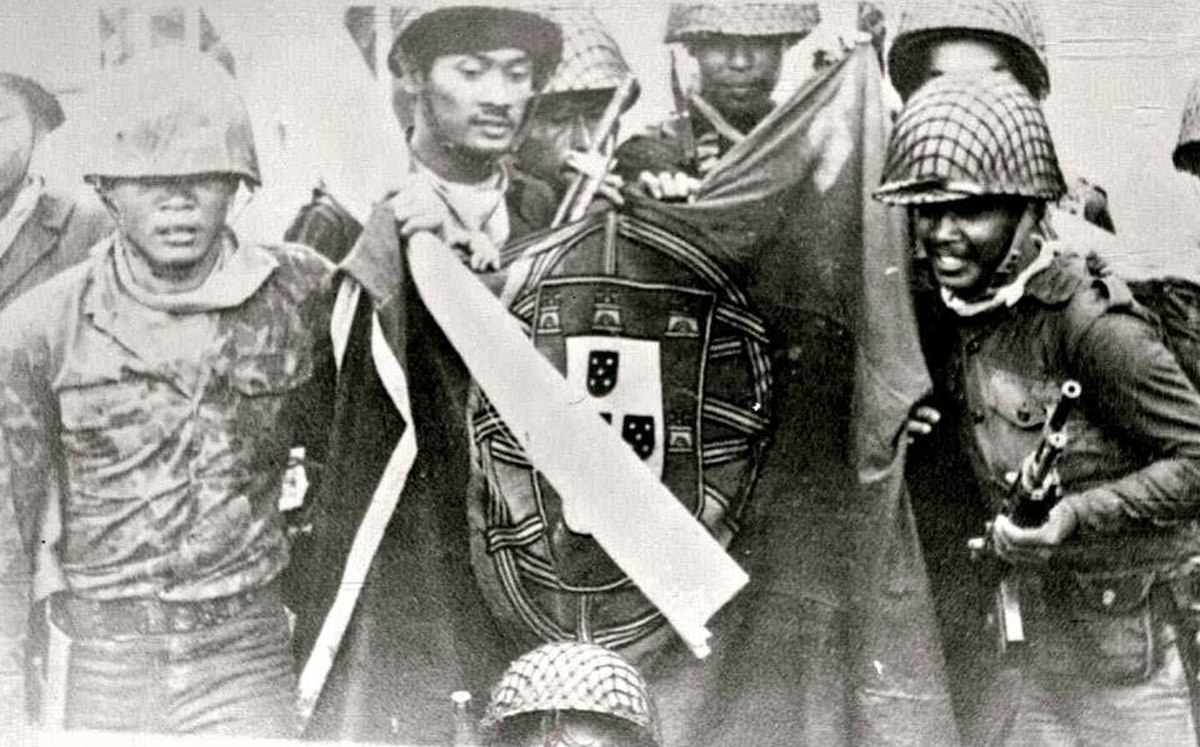
Indonesian invasion of East Timor
East TimorEast Timor owes its territorial distinctiveness from the rest of Timor, and the Indonesian archipelago as a whole, to being colonised by the Portuguese, rather than the Dutch; an agreement dividing the island between the two powers was signed in 1915. Colonial rule was replaced by the Japanese during World War II, whose occupation spawned a resistance movement that resulted in the deaths of 60,000 people, 13 percent of the population at the time. Following the war, the Dutch East Indies secured its independence as the Republic of Indonesia and the Portuguese, meanwhile, re-established control over East Timor.
Indonesian nationalist and military hardliners, particularly leaders of the intelligence agency Kopkamtib and special operations unit, Opsus, saw the 1974 Portuguese coup as an opportunity for East Timor's annexation by Indonesia.[72] The head of Opsus and close adviser to Indonesian President Suharto, Major General Ali Murtopo, and his protege Brigadier General Benny Murdani headed military intelligence operations and spearheaded the Indonesia pro-annexation push.
The Indonesian invasion of East Timor began on 7 December 1975 when the Indonesian military (ABRI/TNI) invaded East Timor under the pretext of anti-colonialism and anti-communism to overthrow the Fretilin regime that had emerged in 1974. The overthrow of the popular and briefly Fretilin-led government sparked a violent quarter-century occupation in which approximately 100,000–180,000 soldiers and civilians are estimated to have been killed or starved to death.[73] The Commission for Reception, Truth and Reconciliation in East Timor documented a minimum estimate of 102,000 conflict-related deaths in East Timor throughout the entire period 1974 to 1999, including 18,600 violent killings and 84,200 deaths from disease and starvation; Indonesian forces and their auxiliaries combined were responsible for 70% of the killings.[74] [75]
During the first months of the occupation, the Indonesian military faced heavy insurgency resistance in the mountainous interior of the island, but from 1977 to 1978, the military procured new advanced weaponry from the United States, and other countries, to destroy Fretilin's framework. The last two decades of the century saw continuous clashes between Indonesian and East Timorese groups over the status of East Timor, until 1999, when a majority of East Timorese voted overwhelmingly for independence (the alternative option being "special autonomy" while remaining part of Indonesia). After a further two and a half years of transition under the auspices of three different United Nations missions, East Timor achieved independence on 20 May 2002.
